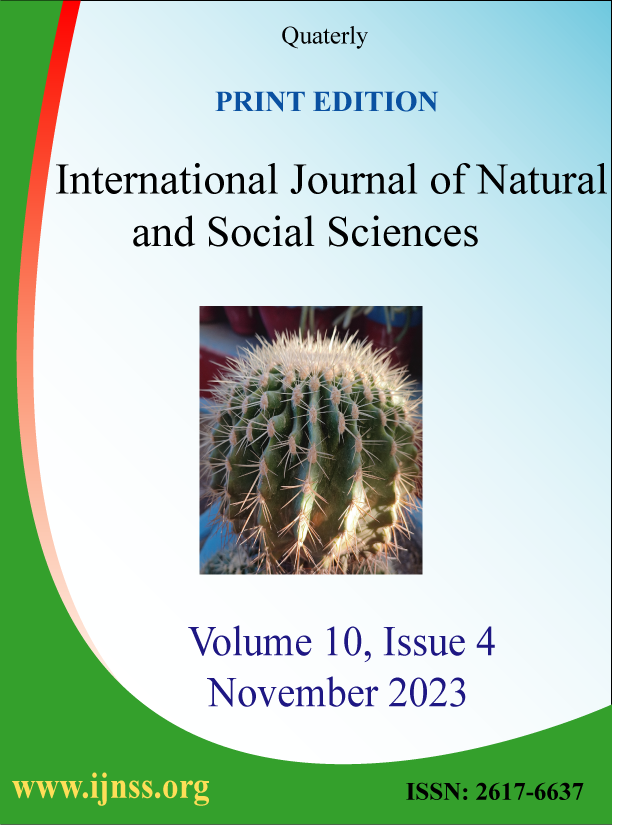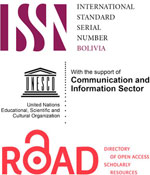Efficacy of medicinal plants against seed borne fungi of wheat seeds
Volume 2, Issue 1, February 2015, Pages 48–52
Md. Shahidul Islam1![]()
![]() , Md. Arshad Ali2, Md. Nazirul Islam Sarker3
, Md. Arshad Ali2, Md. Nazirul Islam Sarker3
1Department of Department of Plant Pathology, Bangladesh Agricultural University, Mymensingh-2202
2Department of Department of Entomology, Bangladesh Agricultural University, Mymensingh-2202
3Department of Department of Agricultural Extension Education, Bangladesh Agricultural University, Mymensingh-2202
| ABSTRACT | Get Full Text PDF |
The experiment was conducted on efficacy of extracts of garlic clove, allamanda leaf, neem leaf and marigold leaf against seed borne fungi of two wheat varieties. The experiment was carried out at the seed pathology centre, Bangladesh Agricultural University, Mymensingh during January, 2006 to February, 2007 to record and identify the seed borne fungi associated with wheat seeds as well as their control with botanical extracts. The seeds were collected from ten villages of two diferent locations of Dinajpur district (Dinajpur Sadar upazila and Birgonj upazila). Different seed borne fungi such as Bipolaris sorokiniana, Ahernaria tenuis, Curvularia lunata, Fusurium spp, Aspergillus niger and Aspergilus flavus were predominant with the wheat seeds of two locations of Dinajpur district. Four botanical extracts such as garlic clove, allamanda leaf, neem leaf and marigold leaf were used to observe their effects on seed borne fungi of wheat. Wheat seeds were treated by dipping separately into different extracts of 1:2 dilutions. Among the plant extracts, garlic (Allium sativum) clove extract was observed to be most effective followed by allamanda (Allamanda cathertica), neem (Azadirachta indica), and Marigold (Tagetes erecta) in reducing seed-borne fungi. Further studies will be needed to evaluate the fungicidal effects of the plant extract in controlling seed borne fungi in wheat seed.
Key words: garlic clove, allamanda leaf, neem leaf, marigold leaf, extracts, seed, fungi.
![]() Corresponding author. Tel.: +8801716872870
Corresponding author. Tel.: +8801716872870
E-mail address: shahid.sbl2008@gmail.com (MS Islam)
How to cite this article: MS Islam, MA Ali and MNI Sarker (2015). Efficacy of medicinal plants against seed borne fungi of wheat seeds. International Journal of Natural and Social Sciences, 2(1): 48-52.
INTRODUCTION
Wheat (Triticum aestivum L.) is the most important grain crop providing near about 20% of the total world food requirement. About two third of the world population use wheat as staple food (Majumder, 1991). Besides human nutrition, wheat is also used as animal feed. Wheat straw used as fuel and straw shade has gained much popularity among the poor farmers of Bangladesh. According to BBS, 2006 total wheat cropped area 1380000 acre, production 976000 mt and yields 0.71 mt/acre in Bangladesh. Wheat, like other cereals is subject to attack by many groups of pathogens (fungi, bacteria, nematodes and viruses). In case of severe attack it may result even 100% yield loss (Hossain and Azad, 1994). The fungi comprise the largest and best studied group of wheat pathogens (Hajihassani et al., 2012). More than 150 species of yeasts and filamentous fungi have been reported on cereals grains (Tabuc et al., 2011). However, the diseases are highly seed-borne and seed transmitted in nature. Different chemicals are used for seed borne fungi of wheat. But now-a-days use of chemical for management of crop diseases is being discouraged due to health hazard and environmental pollution and the obvious development of tolerant pathogens. In addition to that the fungicides are very expensive, therefore alternative means of seed treatment like use of environmental friendly botanicals or plant extracts have drawn the attention all over the world. In Bangladesh, very few attempts have been made to evaluate the effect of plant extracts against wheat diseases. The present experiment was conducted to investigate the efficacy of botanical extracts for controlling seed borne fungi of wheat.
MATERIALS AND METHODS
Collection of seed samples
A total of 40 seed samples (Farmer’s seed) of two wheat (Triticum aestivum L.) varieties Protiva and Sourav were collected from two upazila of Dinajpur district (ten villages were included in each upazila). In case of two varieties one sample was taken from each village. The size of each sample was 200 g. The seeds were then kept in paper bags and stored in the refrigerator at 5-7°C, till these were used for the subsequent studies.
Preparation of plant extract and seed treatment
Four different plant species were collected from different areas of Bangladesh Agricultural University, Mymensingh campus. Twenty five grams of each test plant was grounded in a mortar without water. The pulverized mass was squeezed through 3 folds of fine cloth and then the filtrate was used as extract.
Wheat seeds were treated by dipping separately into different extracts of 1:2 dilutions. Just after dipping, the excess extracts were drained off and treated seeds were tested for the presence of fungal flora by the Standard Blotter Method (ISTA, 1976). In this method, two hundred seeds were randomly taken from each sample. The seeds were plated on water soaked three layered Whatman No.1 filter paper in plastic petridish. In each petridish, 25 seeds were plated at equal distance. All these petridishes were incubated at 20±2°C under 12 hours alternate cycle of Near Ultra Violet (NUV) light and darkness. After 7 days of incubation, petridishes containing incubated seeds were observed under stereomicroscope. Where identification was difficult or doubtful under the stereomicroscope, temporary slide was prepared and examined under the compound microscope and identified with the help of keys (Chidambaram et al., 1973). Numbers of germinated seed were recorded along with the seed-borne fungi after seven days of incubation. The results were expressed in percentage. In case of control, seeds were treated with sterile water.
Data analysis
The experiments were conducted following the Completely Randomized Design (CRD). Analysis of variance was done and the mean differences in the efficacy of treatment were Judged by Duncan’s Multiple Range lest (DMRT).
RESULTS AND DISCUSSION
Results of the present investigation revealed that the wheat seeds produced by farmers are quite frequently infected by fungi. In the present study a total of six fungal species i.e. Bipolaris sorokiniana, Alternaria tenuis, Curvularia lunata, Fusariurn spp, Aspergilius niger and Aspergilius flavus were found to be associated with wheat seeds in the study areas which are also reported in the previous study by (Islam et al., 2015). A considerable number of seed-borne fungal pathogens belonging to the genera Bipolaris, Alternaria, Curvularia, Fusarium and Aspergillus have been detected in wheat seeds (Hossain et al., 1993; Ashrafuzzaman and Hossain, 1992; Rahman, 1998; Hossain and Schlosser 1993; Khan and Kumar 1992).
Effect of plant extracts
In this experiment four plant extracts were used. From the results, it had been observed that all the extracts increase the percentage of seed germination significantly (Table 1, Figure 1). The viability of seed samples recorded reveals that the germination ranges from 78.91% to 80.77 % (Islam et al., 2015).
The highest infection (8.25%) of Bipolaris sorokiniana was recorded in control and infection was reduced to 0.25% when seeds were treated with garlic (Table 1). Neem and marigold reduced the seed-borne fungi of Bipolaris sorokiniana to 3.00% and 3.25% respectively which was significant difference with the effects of garlic and allamanda extracts. In case of Alternaria tenuis allamanda showed best performance with reduction to 1.75% infection compared to control (7.25%). Garlic showed similar effects with reduction to 2.00% infection. Neem and marigold also showed good performance against Curvularialunata. Most effective control of this fungus was obtained with garlic (1.25%) followed by neem (4.00%) and marigold (5.25%).
Figure 1
Effect of different plant extracts in controlling seed-borne fungi of wheat showing A. Control, B. Garlic, C. Allamanda; Arrow indicates the infected seeds.
Fusarium spp infection was significantly reduced to 2.75% when treated with allamanda compared to control (13.75%) followed by garlic (3.25%), neem (5.00%) and marigold (6.13%).
Garlic showed highest performance with reduction to 0.75% infection of both Aspergillus niger and Aspergillus flavus compared to control (6.50%). However different plant extract exhibit potentiality against different seed borne fungi in this study. Garlic showed highest reduction of infection against all isolated fungi except Alternaria tenuis, which was strongly inhibited by allamanda extract. Extracts from Garlic was found effective as seed dresser in inhibiting the mycelial growth and spore germination. Similar observation was reported by a number of authors (Ahmed and Sultana, 1084; FI-Shami et al., 1986; Alice and Rao, 1987; Fakir and Khan, 1992; Ashrafuzzaman and Hossain, 1992; Suratuzzaman, 1995).
Based on the result allamanda showed effects against the fungi next to the garlic extract. This result supports the findings of Jebunnaher (2004). Extract of neem leaf appeared to have moderately effective against fungi associated with the wheat seeds among the tested plant extracts (Table 1). This result corroborates with the findings Khaleduzzaman of (1996) and Rahman el al., (1998). In the present study marigold (Tagetes erecta) appeared to be less effective against seed-borne fungi of wheat.
In the present investigation different plant extracts e.g. garlic, allamanda, neem and marigold were used for controlling seed-borne fungi of wheat seeds .The plant extracts reduced seed-borne prevalence of all the fungi. The reduction of different fungi differed significantly from the control. However among the 4 extracts garlic performed better in reducing seed-home prevalence of all the major fungi and increasing germination. Seed treatment with plant extracts results in higher germination in different crops including wheat have been reported by Ahmed and Sultana (1984), Alice and Rao (1987) and .Khaleduzzaman (1996). Report on plant extracts in treating wheat seeds and its effect on seed germination were scanty in this study.
Table 1
Effect of plant extracts in controlling seed-borne fungi of wheat
| Chemical treatments |
Germina- tion(%) | % Seed borne fungi | Total seed borne fungi(%) |
Reduction Over control(%) |
|||||
| Bipolaris sorokiniana | Alternaria tenuis |
Curvularia lunata |
Fusarium spp |
Aspergillus niger |
Aspergillus flavus |
||||
| Control | 76.50c (60.98) |
8.25a (16.67) |
7.25a (15.59) |
8.25a (16.67) |
13.75a (21.75) |
6.50a (14.75) |
7.00a (15.32) |
51 | |
| Garlic | 81.30a (64.35) |
0.25c (4.47) |
2.00c (8.14) |
1.25c (6.51) |
3.25c (10.38) |
0.75d (5.49) |
0.75d (5.49) |
8.25 | 91.75 |
| Allamanda | 80.25a (63.59) |
1.00c (5.91) |
1.75c (7.39) |
1.75c (7.53) |
2.75c (9.44) |
1.67c d(7.37) |
2.00c (7.99) |
10.92 | 89.08 |
| Neem | 81.25a (64.33) |
3.00b (9.90) |
3.50b (10.64) |
4.00b (11.49) |
5.00b (12.88) |
4.00b (11.49) |
3.40b (10.58) |
22.90 | 77.10 |
| Marigold | 78.50b (62.36) |
3.25b (10.29) |
4.88b (12.72) |
5.25b (13.20) |
6.13b (14.30) |
3.25bc (10.04) |
3.50b (10.64) |
26.26 | 73.74 |
| LSDP ≤0.01) | 2.622 | 1.112 | 1.156 | 1.066 | 1.269 | 1.557 | 1.112 | ||
Column having the same letter (s) is statistically identical; Figures in parenthesis indicate; (Arcsin) transformed values; Four hundred seeds were tested for each sample.
CONCLUSION
Seed treatment by plant extracts may be an effective approach to reduce or eliminates seed-borne fungi and also increase grain germination. Wheat Seed treatment with plant extracts is an eco-friendly measure for controlling seed-borne pathogens. What seed treatment with aqueous extract of garlic and allamanda can be used to reduce fungal incidence.
REFERENCES
Ahmed N and Sultana K (1984). Fungitoxic effect of garlic on treatment of jute seed. Bangladesh Journal of Botany, 13 (2): 130-136.
Alice D and Rao AV (1987). Antifungal Effects of Plant Extracts on Drechslera oryzae in rice. International Rice Research News Letter, 12 (2):28.
Ashrafuzzaman G and Hossain I (1992). Antifungal activity of crude extracts of plants against Rhizocionia solani and Bipolaris sorokiniana. Proc. BAU Research Progress, 6: 188-192.
BBS, (Monthly Statistical Bulletin Bangladesh) June 2006, Ministry of Planning, Govt. of Peoples Republic of Bangladesh, Dhaka. p. 54.
Hajihassani M, Hajihassani A, Khaghani S (2012). Incidence and distribution of seed borne fungi associated with wheat in Markazi Province, Iran. African Journal of Biotechnology, 11(23): 6290-5.
Hossain I and Azad AK (1994). Bipotaris sorokiniana its reaction and effect on the yield of wheat Progressive Agriculture, 5(2): 63-69.
Hossain IH and Schlosser E (1993). Control of Bipolaris sorokiniana in wheat with neem extracts. Bangladesh Journal of Microbiology, 10 (1): 39-42.
Islam MS, Sarker MNI and Ali MA (2015). Effect of seed borne fungi on germinating wheat seed and their treatment with chemicals. International Journal of Natural and Social Sciences, 2(1): 28-32.
Jebunnaher M (2004). Separation of component of allamanda inhibitory to Phomopsis vexans. . An MS thesis submitted to the Department of Plant Pathology, Bangladesh Agricultural University, Mymensingh.pp. 1-49.
Khaleduzzaman SM (1996). Control of seed borne prevalence by seed treatment in Wheat (Triticum aestivum), MS Thesis, Dept. of Plant Pathology. BAU Mymensingh, Bangladesh.p.64.
Khan MI and Kumar R (1992). Antifungal activity of leaf extracts neem on seed mycoflora of wheat. Indian Journal of Seed. Abs. 15(7):299.
Majumder M (1991). Crops of Eastern Indian. West Bengal stage Book Board. Arg. Manson (8th floor). 6/A, Raja Subodh Mallik square, Calcutta. p. 85.
Rahman MA (1998). Study on the effect of seed treatments and Foliar spray in controlling Bipolaris leaf blight of wheat. M.S. Thesis. Department of Plant Pathology, Bangladesh Agricultural University, Mymensingh. pp 40-60.
Suratuzzaman M, Hossain I and Fakir GA (1994). Control of seed-borne fungi of two rice varieties with some plant extracts. Progressive Agriculture, 59(1): 11-15.
Tabuc C, Taranu I and Calin L (2011). Survey of moulds and mycotoxin contamination of cereals in South-Eastern Romania in 2008-2010. Archiva Zootechnica, 14 (4):25







